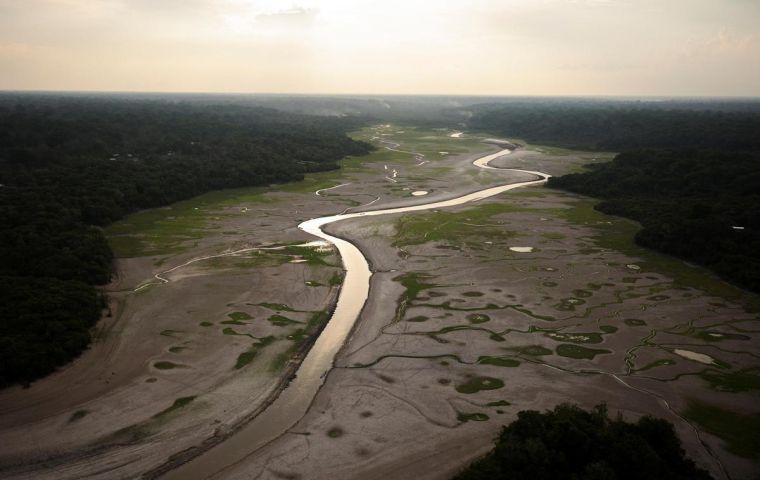MercoPress. South Atlantic News Agency
Entire Brazilian State of Amazonas gripped by drought
 El Niño is causing an abnormal warming of surface waters of the eastern portion of the equatorial region of the Pacific Ocean, it was explained
El Niño is causing an abnormal warming of surface waters of the eastern portion of the equatorial region of the Pacific Ocean, it was explained The entire state of Amazonas has been gripped by a severe drought, with most municipalities (60) in a state of emergency and 2 in a state of alert, Agencia Brasil reported. The El Niño phenomenon has been linked to the ongoing crisis.
The severe drought in Amazonas now affects all 62 municipalities in the state, according to the bulletin released by the state Civil Defense on Thursday (26). There are 60 municipalities in a state of emergency, with Presidente Figueiredo and Apuí, previously in a state of normality, now in a state of alert. So far, 608,000 people and 152,000 families have been affected by this year's drought.
According to the bulletin, between January of this year and October 25, 18,170 outbreaks of heat were recorded in the state, of which 2,500 were in the metropolitan region of Manaus. So far in October alone, there have been 3,368 hotspots, more than double the number recorded in the same period last year, when 1,335 hotspots were recorded.
Civil Defense also said that in the period from July 12 to October 25, the Fire Department fought 2,482 fires, of which 710 were in Manaus and 1,772 in the interior of the state.
In the capital, Manaus, the drought is the worst recorded in 121 years. The level of the Rio Negro on Friday remained at 12.7m, the lowest level ever recorded since 1902 when measurements of the river's volume began. The record high ever measured was 30.02 meters on June 16, 2021.
The scenario occurs at a time when the El Niño phenomenon is intensifying, characterized by the weakening of the trade winds (which blow from east to west) and the abnormal warming of the surface waters of the eastern portion of the equatorial region of the Pacific Ocean. These changes in the interaction between the ocean surface and the lower atmosphere occur at intervals of between three and seven years and have consequences for the climate in different parts of the planet. This is because the dynamics of the air masses in the Pacific Ocean adopt new patterns of moisture transport, affecting temperature and the distribution of rainfall. (Source: Agencia Brasil)




Top Comments
Disclaimer & comment rulesCommenting for this story is now closed.
If you have a Facebook account, become a fan and comment on our Facebook Page!